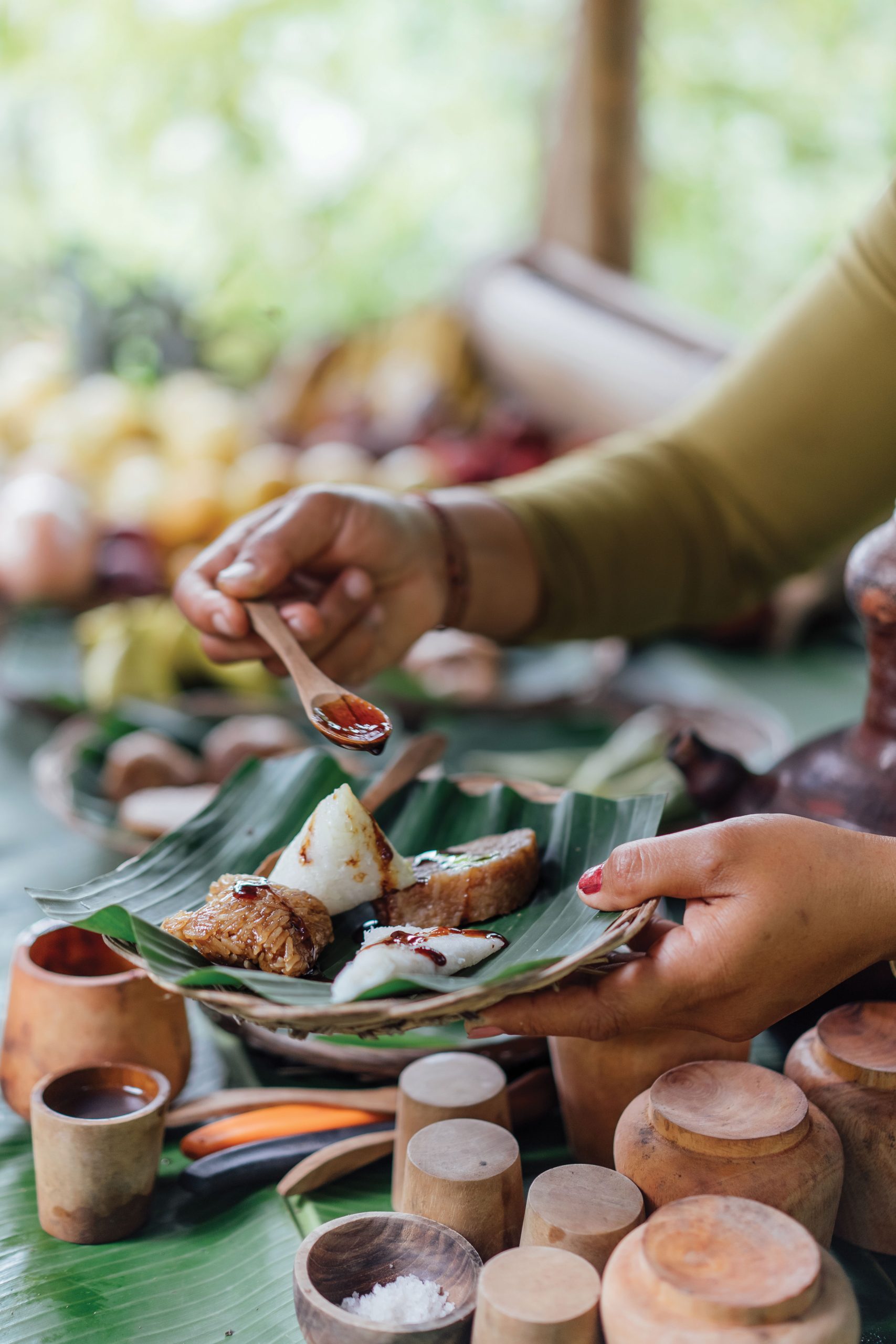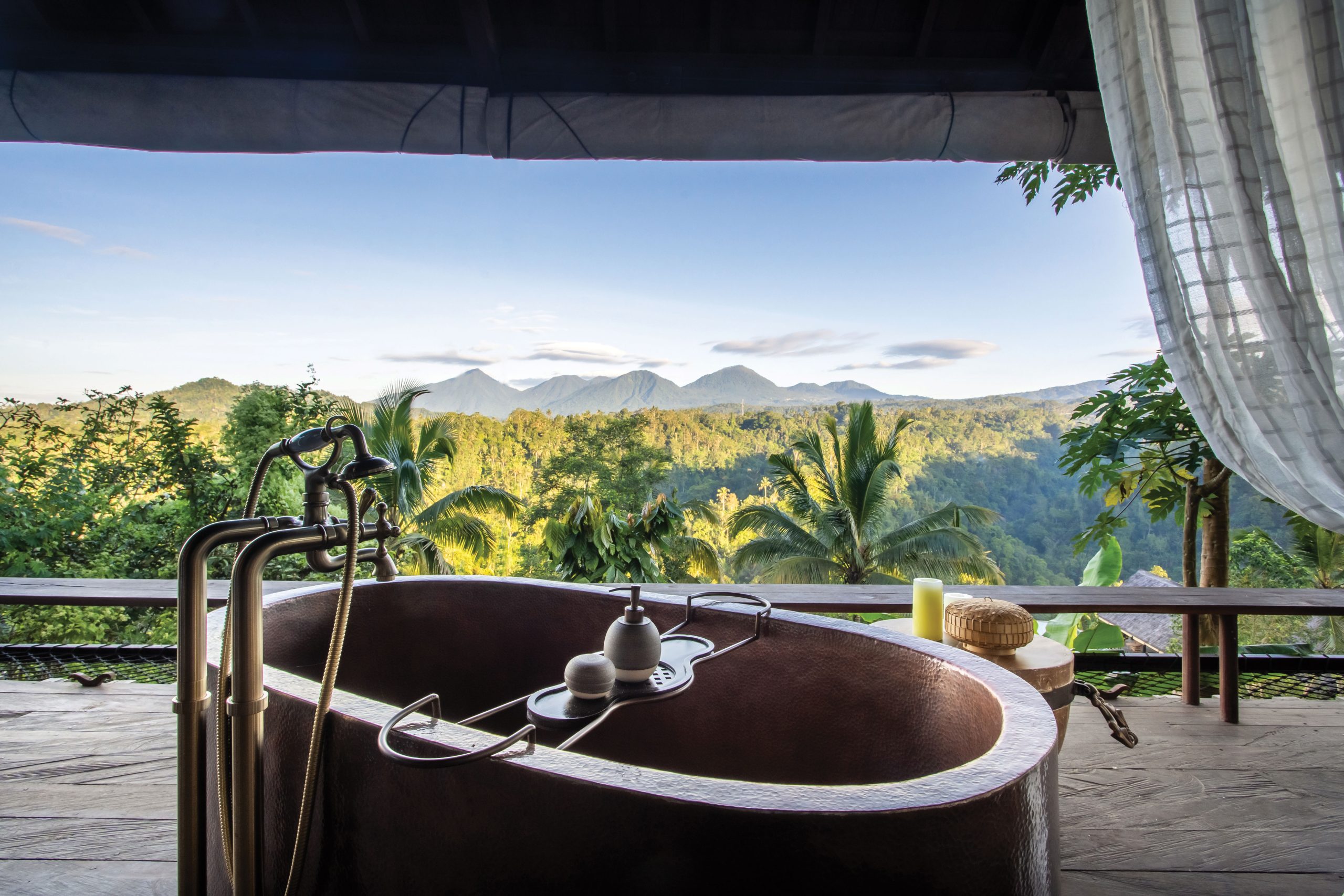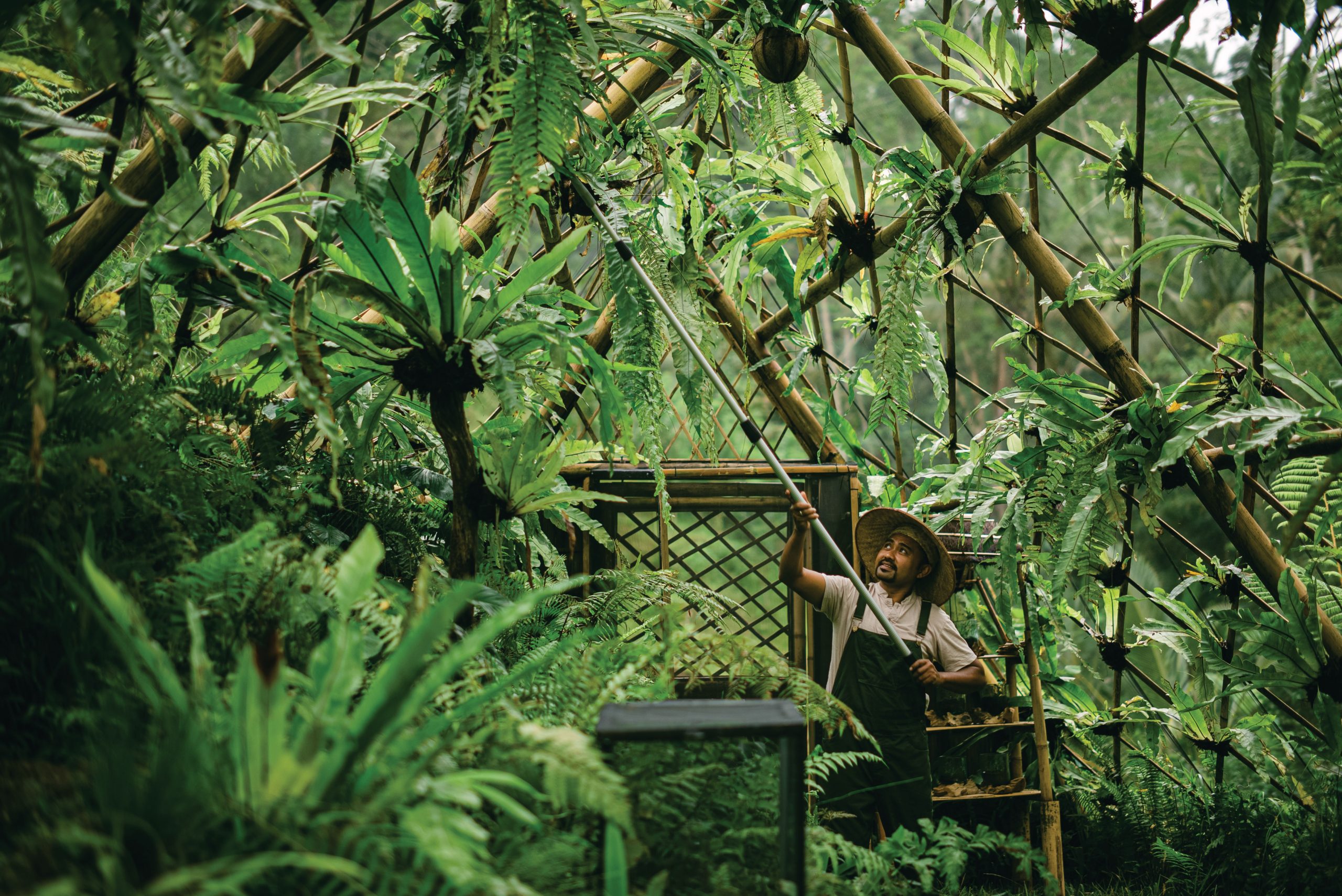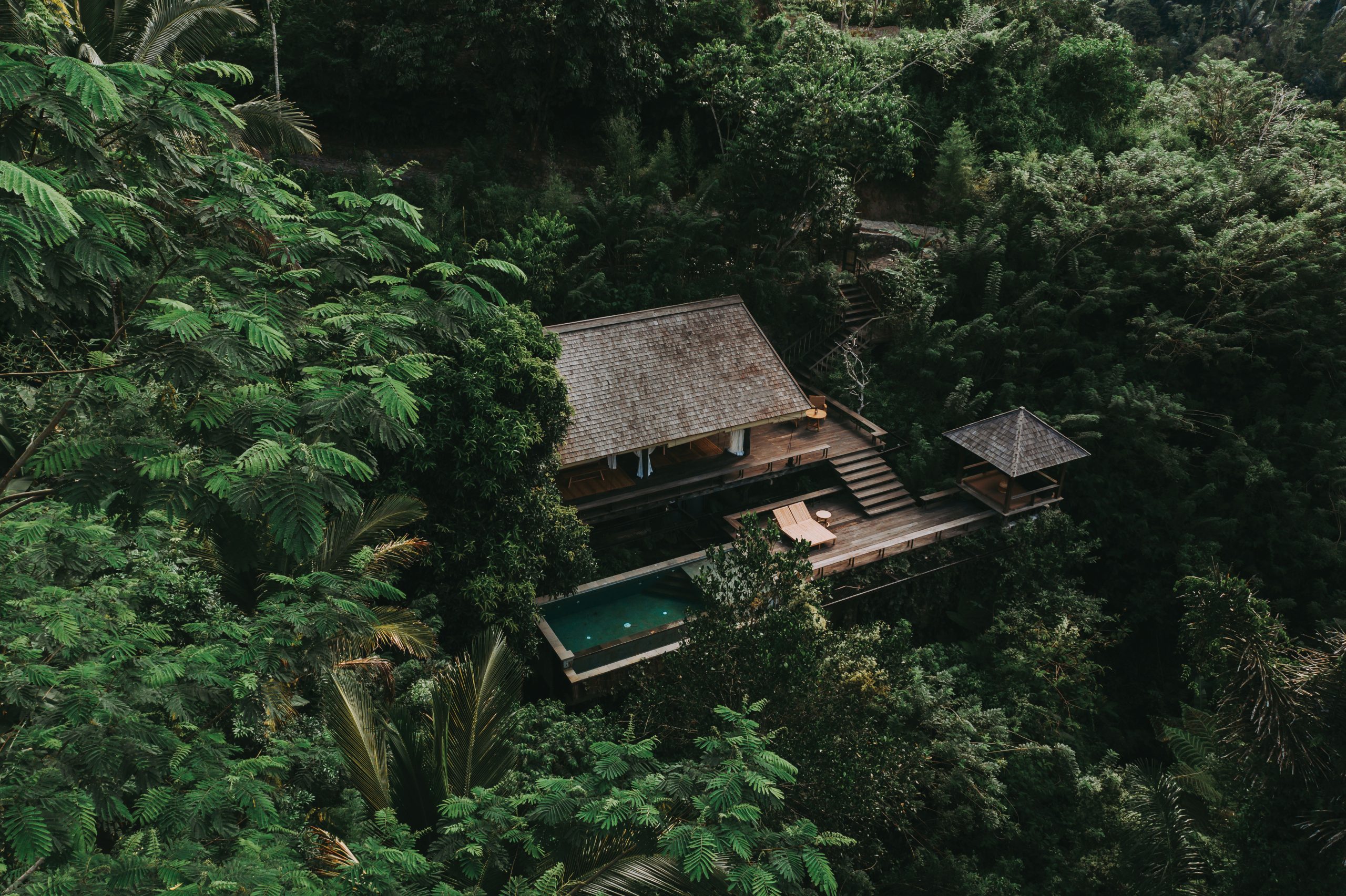In the soft evening light, a tiny flame of red-gold light flutters across the path before disappearing winking into the surrounding jungle. It’s a firefly, a rare and precious sight in modern Bali, where a generation ago children delighted in chasing clouds of the fairy-like creatures through the dark.
In recent years, fireflies — called kunang-kunang
in Balinese — have dwindled in number and sightings now elicit great excitement. At Buahan, a Banyan Tree Escape, a rainforest oasis in the foothills of the mountains that dominate central Bali, about 40 minutes’ drive from Ubud, on the outskirts of Buahan village, the most fortunate of guests are privileged to see one or two. “If you see one firefly you are very lucky — to see 10 is amazing, but that rarely happens now,” says the resort’s assistant director of marketing communications, Lina Suryati. “Balinese people believe they guide the souls of the ancestors.”
Habitat loss, light pollution (which disrupts mating), pesticide use and other environmental factors have taken their toll on these twinkling bioluminescent beetles. Since opening Buahan in 2022, Banyan Tree has worked with a local conservation project named Bring Back the Light to support and restore local firefly populations. Its Lentera Bumi project (the name means “lantern of the earth”) became Bali’s first resort-based conservatory with a firefly breeding nursery, supported by community education programs and new organic farming practices on the resort’s farm and rice field.

Still in their infancy, both projects are in the “trial and error” phase, but observations after the first release of nursery-bred fireflies last year have been promising, showing an increase in the population. The fireflies have an incubation period of up to 18 months, so guests at Buahan have limited access to the nursery, but other wildlife encounters are assured in this place, where connection with the natural world is an integral part of a stay.
Wake to the distant crow of a rooster and open the thick white canopy that swathes your four-poster bed for a view of the mountains. A second layer of drapes, made from biodegradable rayon weighted at the bottom to prevent them from billowing in the breeze, is all that stands between the open-air room and what lives in the jungle beyond it. The 16 bales (villas) at this adults-only resort have been designed with a no-doors, no-walls concept that ensures that guests are immersed in nature, while each is completely secluded from the others. Expect visits from red dragonflies, large green grasshoppers and moths, glimpses of colourful parrots and tiny swifts darting through the trees, and afternoon appearances by small native squirrels that scamper across the railing between room and jungle to disappear deep into the valley below. In the morning, the pretty painted face of a white-breasted waterhen may peep around the open curtain before it runs off on its spindly legs.

It might be tempting to never leave this haven. A hand-beaten copper bathtub with mountain and rainforest views is almost as alluring as the private infinity pool that sits alongside each bale, providing sweet relief from rising humidity. With sustainability at its heart, Buahan was years in the making. Banyan Tree’s design team worked with Gede Kresna, a local architect recognised for sustainable Balinese design, to carefully source and curate each element, from ulin (ironwood) timbers salvaged from old jetties and boats around Indonesia, to the carved wooden day beds adorned with handwoven textiles made by artisans in nearby villages. Cleverly curved wooden walls provide bathroom privacy. The only concession to the tropical heat aside from the pool is a small air-conditioner, discreetly hidden behind the bed’s headboard and designed to funnel cool air to the bed only.
The best mountain views, though, are from the two-storey main lodge, which overlooks another infinity pool, the lush valley and seven peaks: Batukaru, Sanghyang, Adeng, Pohen, Pucuk, Tapak and Lesung. The Ayung River, Bali’s longest, lies just to the west. The steep land is unsuitable for most farming, but here and there are glimpses of verdant rice terraces.
Meals are served at the onsite restaurant, Open Kitchen — a paon in Balinese — where the breakfast buffet is heavy with dragon fruit, pineapple, melon, mango, lychees, passionfruit, pink “water apples” and more. Try salak, the “snakeskin fruit” with a hard, rippled skin that reveals a fruit that looks like garlic cloves but tastes, astonishingly, like pineapple. The paon is an important part of Balinese culture, the kitchen linking daily life to the rhythms of nature. It’s a concept that holds strong at Buahan, where all produce is fresh and organic. Guests can join chef Agus Mulyawan (who works under executive chef Sheandy Satria) to forage for ingredients for the day’s menu, which is 70 per cent plant-based, learning to spot flowers, berries and leaves with tongue-twisting Balinese botanical names, and savouring unfamiliar tastes. “Our fish comes from Jimbaran Bay, but we source meat locally — free-range chicken and duck, and eggs,” Agus says. The well-irrigated garden yields aloe vera, vanilla beans, small strawberries, fern tips, pandan, cacao, banana leaves, jipang (small chokos) , delicate flowers, berries and much else that soon makes it into Agus’s basket. This daily ritual helps the kitchen meet its zero-waste policy.

A short drive away, through Singaperang village, lies the farm of Agung Bagus and his family, who are among the local suppliers who provide 80 per cent of the ingredients on the Open Kitchen menu. Chickens and ducks wander through the plantation, while pigs and cows wait patiently in their stalls as chef Agus picks more morsels for the day’s menu. Agus drops into his basket moringa leaves, a superfood, as Agung opens a bamboo-pole hive to reveal honey from tiny stingless bees.
Back at Buahan, guests can don an apron to learn some culinary skills from chef Agus, who learned to cook in his grandmother’s kitchen before making it his career. Set menus at Open Kitchen include “heritage” dishes based on traditional Balinese fare. Each is a work of art, carefully curated using seasonal ingredients. Firm white fish is diced and stuffed inside a traditional bamboo timbungan cylinder to cook over the open fire, diced pork belly is skewered for the grill and moringa soup is cooked inside a coconut. Lunch is teamed with a house-made kombucha from the Botanist Bar upstairs, which serves creative mocktails and cocktails, some using infused local arak, Balinese cider, beer and wine (or your favourite from Australia, France or elsewhere).
From the main lodge, a four-stop funicular carries guests and luggage down the steep terrain, coming to rest at the yoga pavilion and Toja Spa. It’s a serene spot, where singing bowls, chakra balancing, scrubs, wraps and massage are on offer. Handmade products made from natural ingredients grown in the hotel garden — coconut oil, ginger powder, cloves, ylang-ylang — scent the air. Toja (“water” in Indonesian) is as open to the elements as the guest rooms, with a similar soundtrack: a cacophony of cicadas and frogs, and the heavy gush of a nearby waterfall.
On a cool morning, to discover the source of that sound, negotiate the 306 steep rocky steps to the foot of the Tjampuhan waterfall, which cascades over a gleaming 35-metre-high rock face at the confluence of the Ayung and Satung rivers. On the twisting paths that wind through the rainforest between the bales and the main lodge, guests stay ever-hopeful of sighting another of the elusive fireflies. With a lifespan of only 22 days, theirs is an existence characterised by fleeting beauty, one that becomes a lasting memory for those fortunate enough to see them. At Buahan, you might be so lucky.
